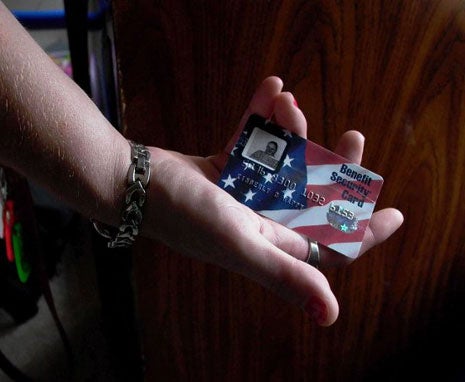How many Americans depend on a government program for a basic (or not so basic) need? According to recently released Census Bureau data and Heritage Foundation calculations, the number is 128.8 million. That is the number of individuals directly receiving aid that they depend on for their daily consumption of things such as rent, prescription drugs, and higher education.
That is 41.3 percent of theU.S.population as of July 2011.
The Wall Street Journal puts the number of people living in a household where at least one member receives help at an even higher 49.1 percent.
The 41.3 percent number is surely undercounting. It is based on survey responses to the Census Bureau’s Current Population Survey (CPS) of March 2011. These responses are well known to undercount the number of people receiving Medicaid, Medicare, Social Security, State Children’s Health Insurance, and Temporary Assistance to Needy Families. Heritage research shows that the undercount in higher education subsidies may be the most dramatic.
The calculations that Heritage ran on the Census Bureau data do not, however, double-count individuals. So if someone receives Medicare and Social Security, he is counted only once. Therefore, the dramatic undercounting in higher education subsidy beneficiaries makes the biggest difference, because recipients of education subsidies are generally younger and not likely to be on other dependency-creating programs.
Those subsidized by the government for their higher education are generally dependent only on that government program. Heritage research shows that of the small number of people in the March CPS survey who admitted that they received higher education subsidies—about 2 million—less than one-half of 1 percent relied on Social Security retirement income; only 1.5 percent were on Medicare in 2011; and only 16 percent were on food stamps. The 2 million admitting they received higher education subsidies is assuredly a vast undercount, because the number of people receiving Pell grants in 2011 was 9.7 million, according to the Department of Education.
Just counting true Pell grant recipients would add millions to the lowball estimate of 128.8 million government dependents.
Sixteen years after President Bill Clinton erroneously declared “the era of big government” over, it’s not over; it’s still with us and growing. Unless something is done,Americaas we have known it will cease to exist.
There is a way out of the dependence-on-government trap. Steps are laid out in Heritage’s Saving the American Dream plan. If this plan were implemented, the economy would grow, government expenses would be held in check, and more Americans would support themselves. Some of the good results for individuals and the country would be:
- More Americans climbing the prosperity ladder.
- Fewer Americans stuck in the rut of “just getting by.”
- Those who currently receive more from the government than they pay in taxes could become contributing taxpayers.
- Catastrophe averted by shrinking the runaway national debt.
- More happiness as the intergenerational cycle of government dependence would be shattered and replaced by an intergenerational cycle of self-reliance and private-sector opportunities for all.
All the government has to do is adopt the plan.





























